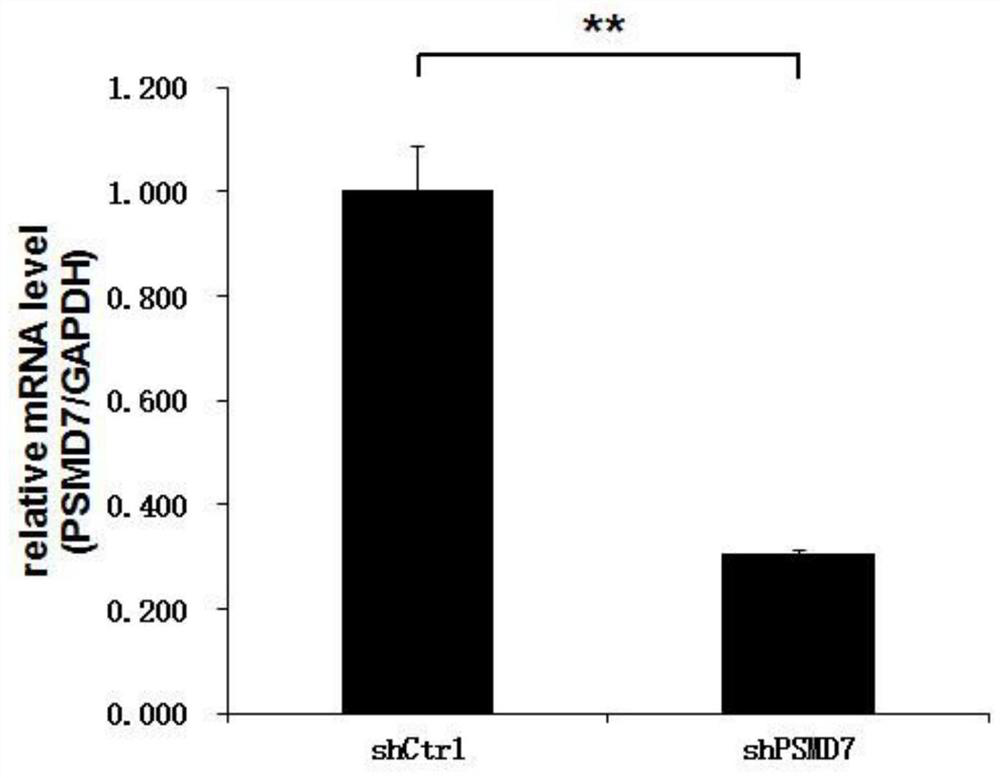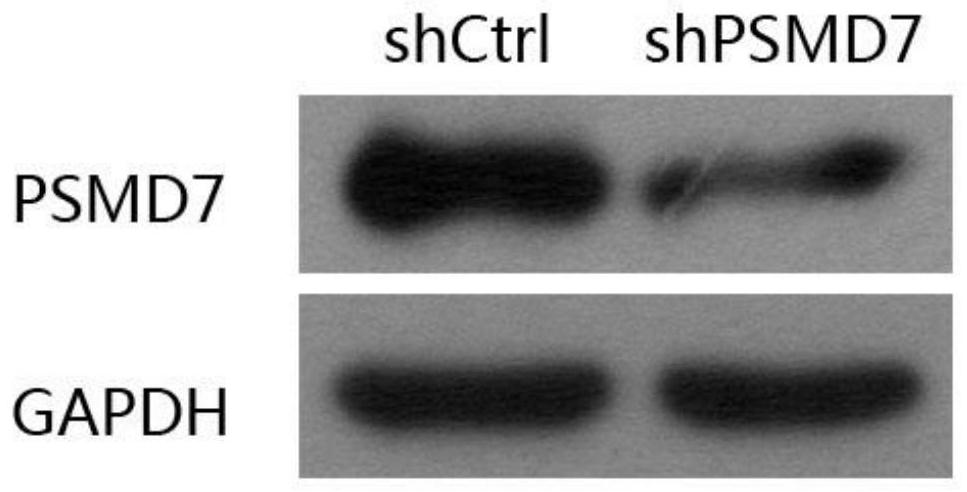Application of human PSMD7 gene and related product
A gene and application technology, applied in the application of human PSMD7 gene and related products, can solve the problems of PSMD7 gene and other problems
- Summary
- Abstract
- Description
- Claims
- Application Information
AI Technical Summary
Problems solved by technology
Method used
Image
Examples
Embodiment 1
[0119] Example 1 Preparation of RNAi lentivirus against human PSMD7 gene
[0120] 1. Screening for effective siRNA targets against the human PSMD7 gene
[0121] Retrieve PSMD7 (NM_002811) gene information from Genbank; design effective siRNA targets for PSMD7 gene. Table 1-1 lists the screened effective siRNA target sequences against the PSMD7 gene.
[0122] Table 1-1 is targeted at the siRNA target sequence of human PSMD7 gene
[0123] SEQ ID NO TargetSeq(5'-3') 1 TGAGGAAGTTGGAGTTGAA
[0124] 2. Preparation of lentiviral vector
[0125] Aim at the siRNA target (take SEQ ID NO: 1 as an example) to synthesize a double-stranded DNA Oligo sequence (Table 1-2) with Age I and EcoR I restriction sites at both ends; Dicer acts on the pGCSIL-GFP vector (provided by Shanghai Jikai Gene Medical Technology Co., Ltd.) to linearize it, and agarose gel electrophoresis identifies the digested fragments.
[0126] Table 1-2 Double-stranded DNA Oligo with sticky ends ...
Embodiment 2
[0145] Example 2 Real-time fluorescent quantitative RT-PCR method to detect gene silencing efficiency
[0146] Human pancreatic cancer ASPC-1 cells and PANC-1 cells in the logarithmic growth phase were digested with trypsin to make a cell suspension (the number of cells was about 5×10 4 / ml) were inoculated in a 6-well plate and cultured until the cell confluency reached about 30%. According to the multiplicity of infection value (MOI, ASPC-1:20, PANC-1:20), add an appropriate amount of the lentivirus prepared in Example 1, replace the medium after 24 hours of cultivation, and collect the cells after the infection time reaches 5 days . Total RNA was extracted according to the instruction manual of Invitrogen's Trizol. According to the M-MLV instruction manual of Promega Company, RNA was reverse-transcribed to obtain cDNA (see Table 2-1 for the reverse transcription reaction system, react at 42°C for 1 hour, and then bathe in a water bath at 70°C for 10 minutes to inactivate ...
Embodiment 3
[0153] Example 3 Western Blot detection target reduces PSMD7 gene protein level expression
[0154] 1. Extraction of total cell protein
[0155] (1) Infect the target cells (human pancreatic cancer ASPC-1 cells, pancreatic cancer PANC-1 cells, MOI, ASPC-1:20, PANC-1) with the control virus and the RNAi virus targeting PSMD7 interference target respectively :20). Cell samples were received and washed twice with PBS. Take an appropriate amount of RIPA lysate, add PMSF within a few minutes before use, so that the final concentration of PMSF is 1mM. (Use RIPA lysate, link to instructions: http: / / www.beyotime.com / ripa-lysis-bufferm.htm)
[0156] (2) Add an appropriate amount of RIPA lysate, and lyse on ice for 10-15 minutes. Scrape the cells and transfer them into a new EP tube, and then ultrasonically disrupt the cells (20 times at 40W, 1 s each time, 2 s apart).
[0157] (3) 4°C, 12000g, centrifuge for 15min, take the supernatant and measure the protein concentration by BCA ...
PUM
 Login to View More
Login to View More Abstract
Description
Claims
Application Information
 Login to View More
Login to View More - R&D
- Intellectual Property
- Life Sciences
- Materials
- Tech Scout
- Unparalleled Data Quality
- Higher Quality Content
- 60% Fewer Hallucinations
Browse by: Latest US Patents, China's latest patents, Technical Efficacy Thesaurus, Application Domain, Technology Topic, Popular Technical Reports.
© 2025 PatSnap. All rights reserved.Legal|Privacy policy|Modern Slavery Act Transparency Statement|Sitemap|About US| Contact US: help@patsnap.com



